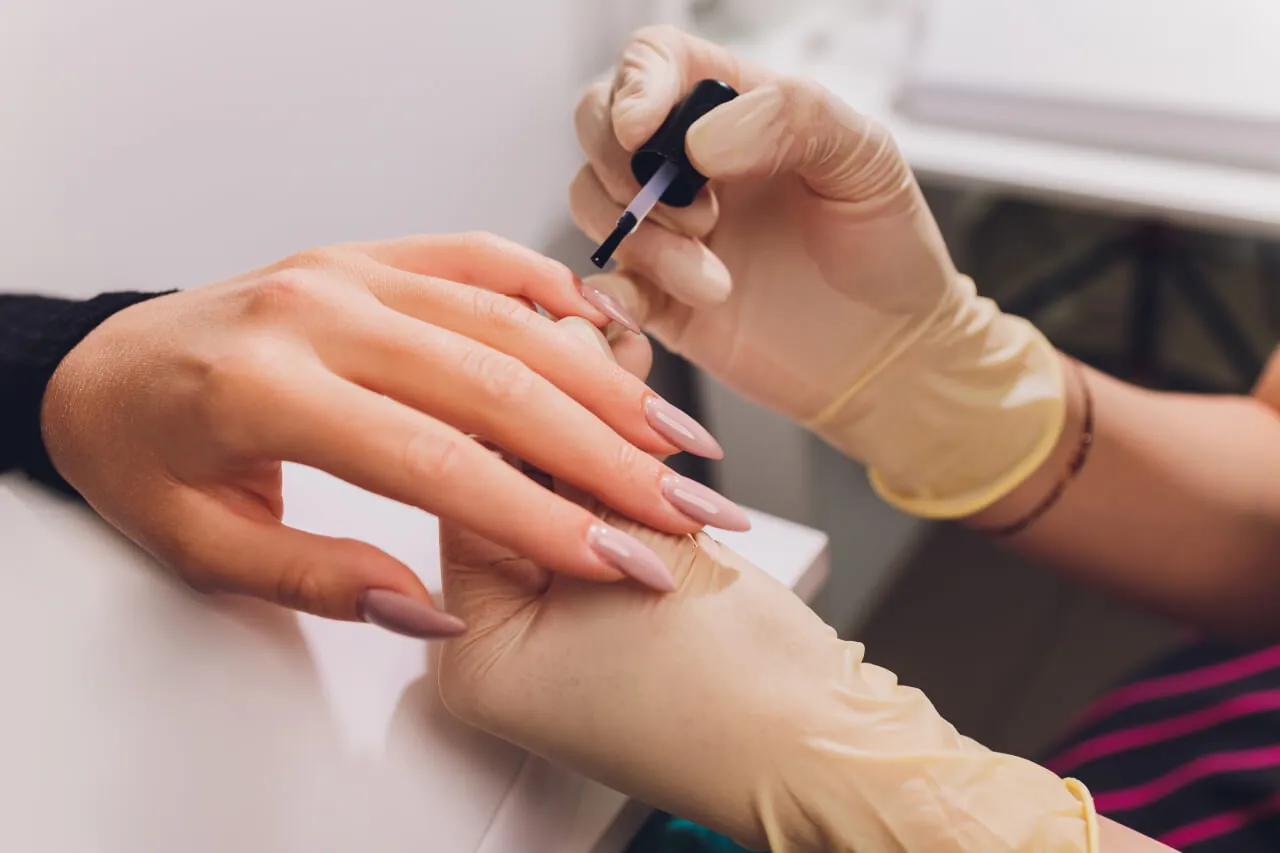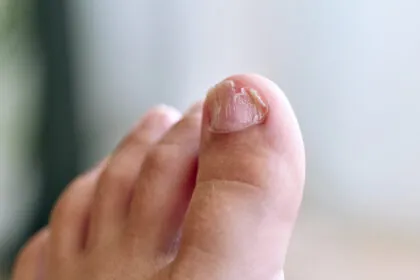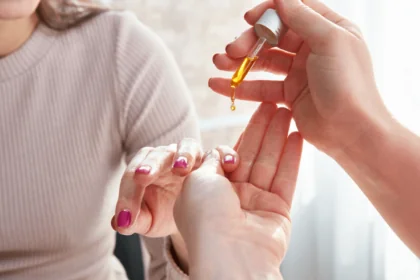Healthy Nails are not just accessories that you can paint and decorate. They are also indicators of your health and well-being.
Your nails are not just a canvas for color; they’re indicators of your overall well-being.
Healthy nails are smooth, shiny, and strong, while unhealthy nails are brittle, dull, and prone to breakage.
Who wouldn’t desire nails as resilient as their favorite coffee blend? Attaining those Instagram-worthy nails demands a bit of tender loving care.
Worry not, as we present the definitive manual on nail care, ensuring your nails achieve peak aesthetics and optimal health.
Covering everything from care to tips for healthy nails, we’ve compiled all the expert tips and tricks to elevate your manicure game.
Importance of Healthy Nails
Healthy Nails are often overlooked in the realm of self-care, yet its significance extends far beyond mere aesthetics.
Our nails serve as indicators of our overall well-being, offering insights into our internal health. Brittle, discolored, or ridged nails can be signs of nutritional deficiencies, underlying health issues, or even stress.
Healthy nails, on the other hand, not only contribute to a polished appearance but also serve as a testament to our commitment to self-care.
Beyond the cosmetic aspect, nails play a practical role in our daily lives, aiding in tasks that range from gripping and grasping to intricate activities.
Neglecting nail health may lead to uncomfortable issues such as ingrown nails or fungal infections.
Therefore, recognizing the importance of nail health involves embracing a holistic approach to self-care, where the condition of our nails becomes a reflection of our overall health and well-being.
Regular nail care, including moisturizing, trimming, and avoiding harsh chemicals, is an investment in both cosmetic elegance and the subtle signals our nails convey about our inner health.
Nail Anatomy
Nail anatomy is a fascinating and intricate subject that involves understanding the various components that make up our healthy nails .
Nails are primarily composed of a tough protein called keratin, the same protein found in our hair and skin.
The visible part of the nail that we paint and care for is called the nail plate.
Beneath the nail plate is the nail bed, which provides crucial support for the nail as it grows.
The cuticle is a thin layer of skin that protects the base of the nail, sealing the space between the nail plate and the surrounding skin.
It acts as a barrier, preventing bacteria and other foreign particles from entering the nail matrix.
The lunula is another essential element, often visible as a crescent-shaped white area at the base of the nail.
This region is a key part of the matrix, which is responsible for producing new cells that eventually become the hardened nail plate.
Proper care of the lunula and matrix is essential for promoting healthy nail growth.
Signs of Nail Issues
Nail issues can manifest in various ways, and paying attention to the signs can provide valuable insights into our overall health.
Here are some common signs of nail issues:
Changes in Color: Discoloration, such as yellowing or dark spots on the nails, can indicate underlying health issues or fungal infections.
Brittleness or Peeling: Nails that easily break, peel, or split may be a sign of nutritional deficiencies, excessive exposure to water, or overuse of nail products.
Changes in Thickness: A sudden thickening of the nails may be linked to conditions like fungal infections or psoriasis.
Pitting: Small dents or pits in the nails could be a sign of psoriasis or other skin conditions affecting the nail matrix.
Clubbing: Enlargement of the fingertips and nails, known as clubbing, may indicate respiratory or cardiovascular issues.
White Spots: While often harmless, white spots on the nails could be due to minor injuries or indicate a fungal infection.
Changes in Shape: Unusual changes in the shape of the nails, such as spoon-shaped or concave nails, may be associated with iron deficiency anemia.
Separation from Nail Bed: Onycholysis, or separation of the nail from the nail bed, can be caused by trauma, fungal infections, or underlying health conditions.
Ridges: Vertical or horizontal ridges may indicate various issues, including nutritional deficiencies, aging, or certain medical conditions.
Pain or Swelling: Persistent pain, swelling, or redness around the nails may be a sign of infection or other inflammatory conditions.
Nail trimming
Proper nail trimming is a fundamental aspect of nail care that contributes to the overall health and appearance of your nails.
Here are key steps and tips for effective and safe nail trimming:
Tools: Invest in high-quality nail clippers or manicure scissors to ensure a clean and precise cut.
Sanitize your tools regularly to prevent infections.
Soften Nails: Trim your nails after a shower or soak them in warm, soapy water for a few minutes.
This softens the nails, making them easier to cut.
Shape: Choose a nail shape that suits your preference, whether it’s square, rounded, or oval.
Trim the nails straight across and round the tips in a gentle curve.
Length: Trim your nails to a length that is comfortable for you, avoiding cutting too close to the skin to prevent painful ingrown nails.
Straight Cuts: For a neat look, make straight cuts across your healthy nails, following its natural shape.
Avoid rounding the edges excessively to reduce the risk of ingrown nails.
Smooth Edges: Use a nail file to smooth any rough edges and shape the tips for a polished finish.
This helps prevent snags and keeps your nails looking well-groomed.
Cuticles: Gently push back the cuticles using a cuticle pusher or an orangewood stick.
Avoid cutting the cuticles, as they act as a protective barrier against infection.
Moisturize: After trimming, apply a nourishing cuticle oil or moisturizer to keep your healthy nails and surrounding skin hydrated.
This prevents dryness and promotes healthy growth.
Regular Maintenance: Aim to trim your nails regularly, depending on your nail growth rate.
This helps prevent breakage and maintains a consistent nail length.
Avoid Biting: If you’re prone to nail-biting, consider using a bitter-tasting nail polish or seeking alternative methods to break the habit.
Biting can damage the nails and lead to infections.
Nutritional Factors for Healthy Nails
Nutrition and Nail Oils plays a crucial role in maintaining the health and strength of your nails.
Here are key nutritional factors that contribute to strong and healthy nails:
- Protein: Nails are primarily made of a protein called keratin. Including an adequate amount of protein in your diet from sources like lean meat, poultry, fish, eggs, dairy, legumes, and nuts supports nail growth and strength.
- Biotin: Also known as vitamin H, biotin is essential for the formation of keratin. Foods rich in biotin include eggs, nuts, seeds, sweet potatoes, and spinach. Biotin supplements can also be considered, but it’s advisable to consult with a healthcare professional first.
- Iron: Iron deficiency can lead to brittle nails and slow growth. Incorporate iron-rich foods such as lean meats, beans, lentils, spinach, and fortified cereals to promote healthy nails.
- Zinc: Zinc is vital for the health of the nail matrix, where nail cells are produced. Foods like nuts, seeds, whole grains, and dairy products are good sources of zinc.
- Vitamins A and C: These vitamins contribute to overall nail health. Vitamin A is found in orange and yellow vegetables, while vitamin C is abundant in citrus fruits, strawberries, and bell peppers.
- Omega-3 Fatty Acids: Found in fatty fish, flaxseeds, chia seeds, and walnuts, omega-3 fatty acids help moisturize the nails and prevent brittleness.
- Vitamin E: This antioxidant vitamin helps protect the nails from damage. Include sources of vitamin E such as almonds, sunflower seeds, spinach, and avocados in your diet.
- Hydration: Drinking an adequate amount of water is essential for overall health, including nail health. Hydration helps prevent dry and brittle nails.
- Silica: Found in oats, brown rice, and leafy green vegetables, silica contributes to nail strength and may help prevent brittleness.
- Copper: Copper is involved in the formation of collagen, which supports nail structure. Foods like organ meats, shellfish, nuts, and seeds provide copper.
Conclusion
In conclusion, Nail Care 101 is your go-to guide for achieving healthy nails that are not only strong but also radiate health and vitality.
From understanding the intricacies of nail anatomy to mastering the art of proper trimming and recognizing signs of potential issues, this comprehensive guide empowers you with the knowledge to elevate your nail care routine.
By incorporating nutritional factors and adopting healthy habits, you can nurture your nails from within.
So, whether you’re aiming for a flawless mani or simply seeking nails as strong as your coffee order, these tips provide the TLC your nails deserve.
Embrace the rituals of nail care, and let your hands become a canvas for confidence and self-care.
With the right techniques and a touch of pampering, your nails can truly become a statement of your overall well-being. Cheers to strong, healthy nails and the beauty they bring to your fingertips!
How often should I trim my nails for optimal health?
Regular nail maintenance is key. Aim for trimming every 2 weeks to prevent breakage, maintain a neat appearance and for a healthy nails.
Are there specific signs I should look for to identify potential nail issues?
Watch for discoloration, changes in thickness, or unusual shape. These could indicate underlying health concerns.
Can nutritional factors truly impact the health and strength of my nails?
Absolutely. A balanced diet rich in vitamins, biotin, and minerals like zinc supports overall nail health.
What are the essential steps for proper nail trimming to prevent damage?
Use sharp, clean clippers, trim straight across, and round the tips in a gentle curve to prevent ingrown nails.
How does understanding nail anatomy contribute to better Healthy Nails ?
Knowing the structure helps you address specific issues, like cuticle care and avoiding damage to the nail bed.
Are there any common mistakes people make in their nail care routine?
Overusing harsh nail products, ignoring signs of infection, and improper trimming are common mistakes to avoid.





